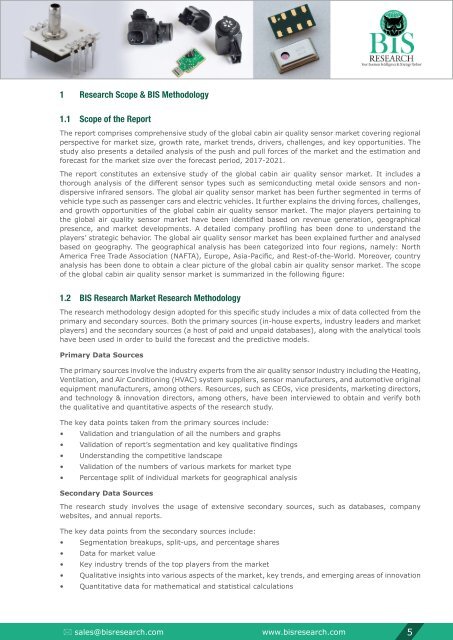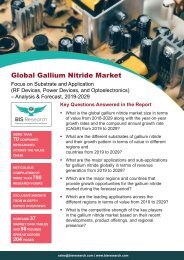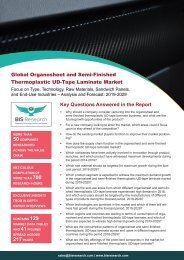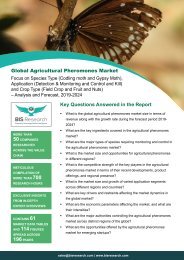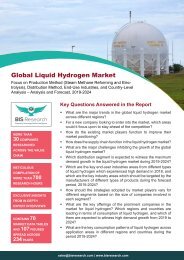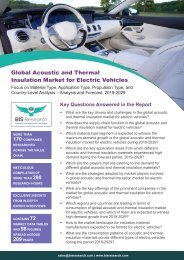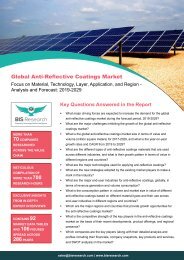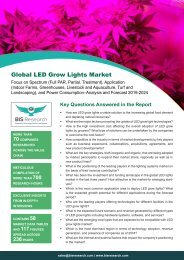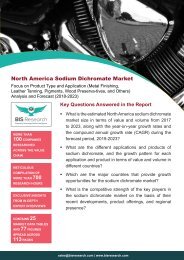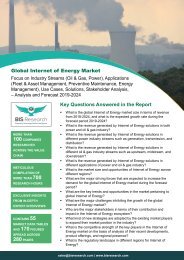Automotive Cabin Air Quality Sensor Market Survey
The global automotive cabin air quality sensor market value for passenger cars is expected to increase from $XX million in 2017 to $XX million by 2021 growing at a CAGR of XX%. The global automotive cabin air quality sensor market value for electric vehicles is expected to grow from $XX million in 2017 to $XX million in 2021. Rising sales of passenger cars and electric vehicles along with high adoption of air quality control systems due to the rising problem of air pollution has led to the robust market growth during the forecast period.
The global automotive cabin air quality sensor market value for passenger cars is expected to increase from $XX million in 2017 to $XX million by 2021 growing at a CAGR of XX%. The global automotive cabin air quality sensor market value for electric vehicles is expected to grow from $XX million in 2017 to $XX million in 2021. Rising sales of passenger cars and electric vehicles along with high adoption of air quality control systems due to the rising problem of air pollution has led to the robust market growth during the forecast period.
You also want an ePaper? Increase the reach of your titles
YUMPU automatically turns print PDFs into web optimized ePapers that Google loves.
1 Research Scope & BIS Methodology<br />
1.1 Scope of the Report<br />
The report comprises comprehensive study of the global cabin air quality sensor market covering regional<br />
perspective for market size, growth rate, market trends, drivers, challenges, and key opportunities. The<br />
study also presents a detailed analysis of the push and pull forces of the market and the estimation and<br />
forecast for the market size over the forecast period, 2017-2021.<br />
The report constitutes an extensive study of the global cabin air quality sensor market. It includes a<br />
thorough analysis of the different sensor types such as semiconducting metal oxide sensors and nondispersive<br />
infrared sensors. The global air quality sensor market has been further segmented in terms of<br />
vehicle type such as passenger cars and electric vehicles. It further explains the driving forces, challenges,<br />
and growth opportunities of the global cabin air quality sensor market. The major players pertaining to<br />
the global air quality sensor market have been identified based on revenue generation, geographical<br />
presence, and market developments. A detailed company profiling has been done to understand the<br />
players’ strategic behavior. The global air quality sensor market has been explained further and analysed<br />
based on geography. The geographical analysis has been categorized into four regions, namely: North<br />
America Free Trade Association (NAFTA), Europe, Asia-Pacific, and Rest-of-the-World. Moreover, country<br />
analysis has been done to obtain a clear picture of the global cabin air quality sensor market. The scope<br />
of the global cabin air quality sensor market is summarized in the following figure:<br />
1.2 BIS Research <strong>Market</strong> Research Methodology<br />
The research methodology design adopted for this specific study includes a mix of data collected from the<br />
primary and secondary sources. Both the primary sources (in-house experts, industry leaders and market<br />
players) and the secondary sources (a host of paid and unpaid databases), along with the analytical tools<br />
have been used in order to build the forecast and the predictive models.<br />
Primary Data Sources<br />
The primary sources involve the industry experts from the air quality sensor industry including the Heating,<br />
Ventilation, and <strong>Air</strong> Conditioning (HVAC) system suppliers, sensor manufacturers, and automotive original<br />
equipment manufacturers, among others. Resources, such as CEOs, vice presidents, marketing directors,<br />
and technology & innovation directors, among others, have been interviewed to obtain and verify both<br />
the qualitative and quantitative aspects of the research study.<br />
The key data points taken from the primary sources include:<br />
• Validation and triangulation of all the numbers and graphs<br />
• Validation of report’s segmentation and key qualitative findings<br />
• Understanding the competitive landscape<br />
• Validation of the numbers of various markets for market type<br />
• Percentage split of individual markets for geographical analysis<br />
Secondary Data Sources<br />
The research study involves the usage of extensive secondary sources, such as databases, company<br />
websites, and annual reports.<br />
The key data points from the secondary sources include:<br />
• Segmentation breakups, split-ups, and percentage shares<br />
• Data for market value<br />
• Key industry trends of the top players from the market<br />
• Qualitative insights into various aspects of the market, key trends, and emerging areas of innovation<br />
• Quantitative data for mathematical and statistical calculations<br />
sales@bisresearch.com www.bisresearch.com 5


